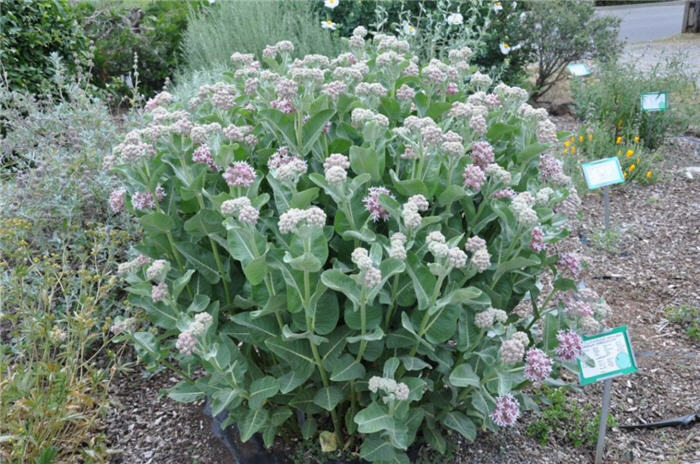| Botanical Name: Asclepias speciosa | |
| Common Name: Showy Milkweed |

-
Anatomy
-
Culture
-
Design
Plant Type
Perennial, Succulent
Height Range
1-3'
Flower Color
Pink, White
Flower Season
Spring, Summer, Fall
Leaf Color
Grey Green, Light Green
Bark Color
White
Fruit Color
Brown
Fruit Season
n/a
Sun
Full
Water
Low
Growth Rate
Moderate
Soil Type
Sandy, Clay, Loam, Rocky, Unparticular
Soil Condition
Average, Rich, Poor, Well-drained, Moist
Soil pH
Neutral, Basic
Adverse Factors
Poisonous
Design Styles
English Cottage, Meadow, Ranch, Spanish, Native Garden
Accenting Features
Showy Flowers, Unusual Foliage, Unusual Shape
Seasonal Interest
Spring, Summer, Fall
Location Uses
Perennial Border, Raised Planter
Special Uses
Naturalizing
Attracts Wildlife
Hummingbirds, Butterflies, Wildlife
Information by: Stephanie Duer
Photographer: GardenSoft
Photographer: GardenSoft
-
Description
-
Notes
Broad, long, and widely spaced leaves ascend a tall and sturdy flower stalk topped by a huge, showy cluster of pink/white flowers. Showy Milkweeds was common along roadsides and in fields, but is becoming less so as habitat is destroyed. The tan, three inch long seed pod containing silky hairs around the seeds is a common toy for kids and was used in the past as pillow filling. Butterfly and hummingbird attractor. Larval food of the Monarch Butterfly.
Difficult to establish as it has a long tap root and resents being moved. If you are lucky enough to find plants, buy the smallest ones to lessen transplant shock. Though tough, they tend to grow in low spots and ditches, so plant where water will flow to them and collect (but don't overwater either!). However, going into winter with wet soil around the crown may cause them to rot. As mentioned, not an easy one to get going, but the butterflies will thank you. 2 to 3 feet tall, and eventually as wide.